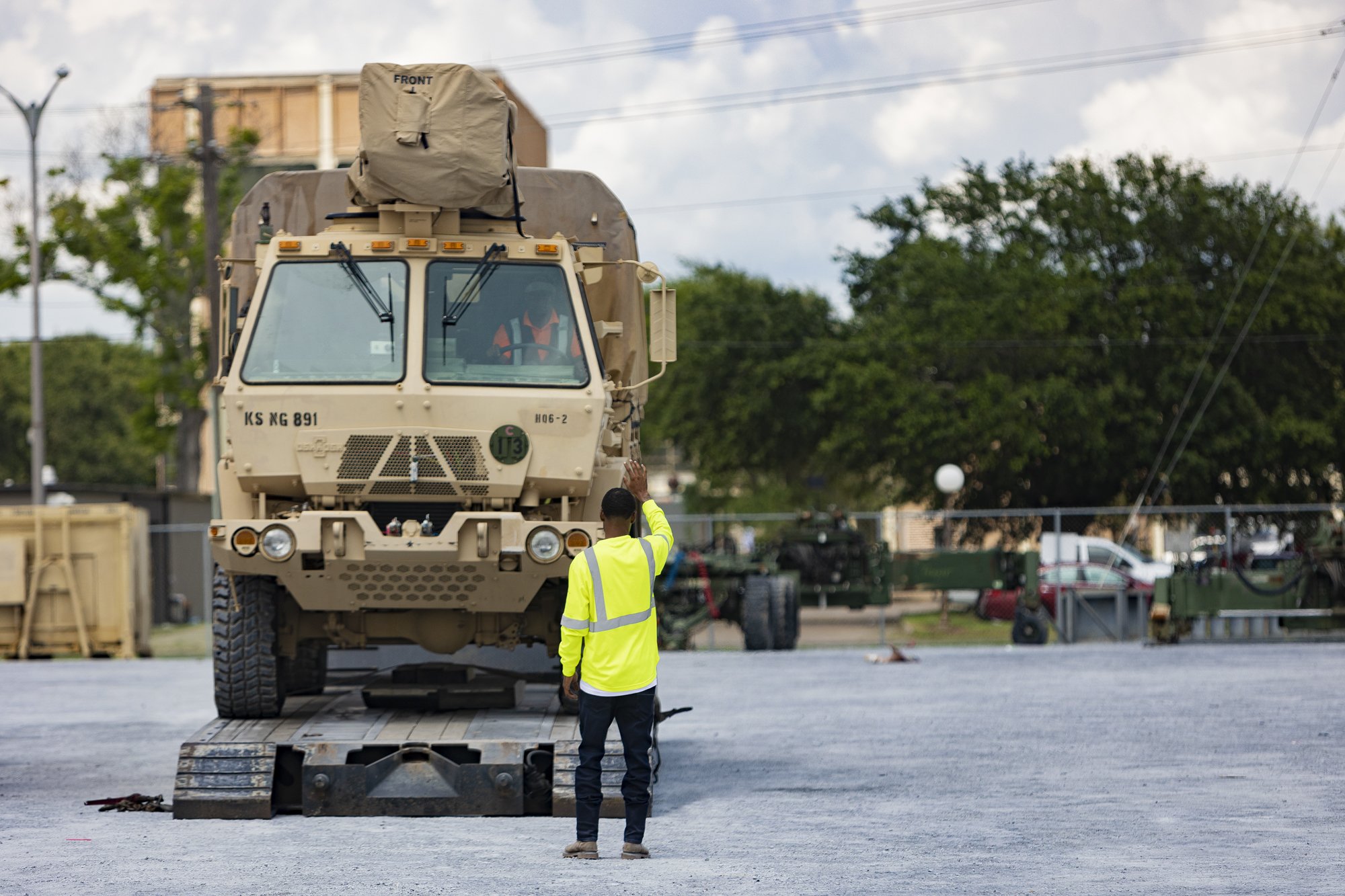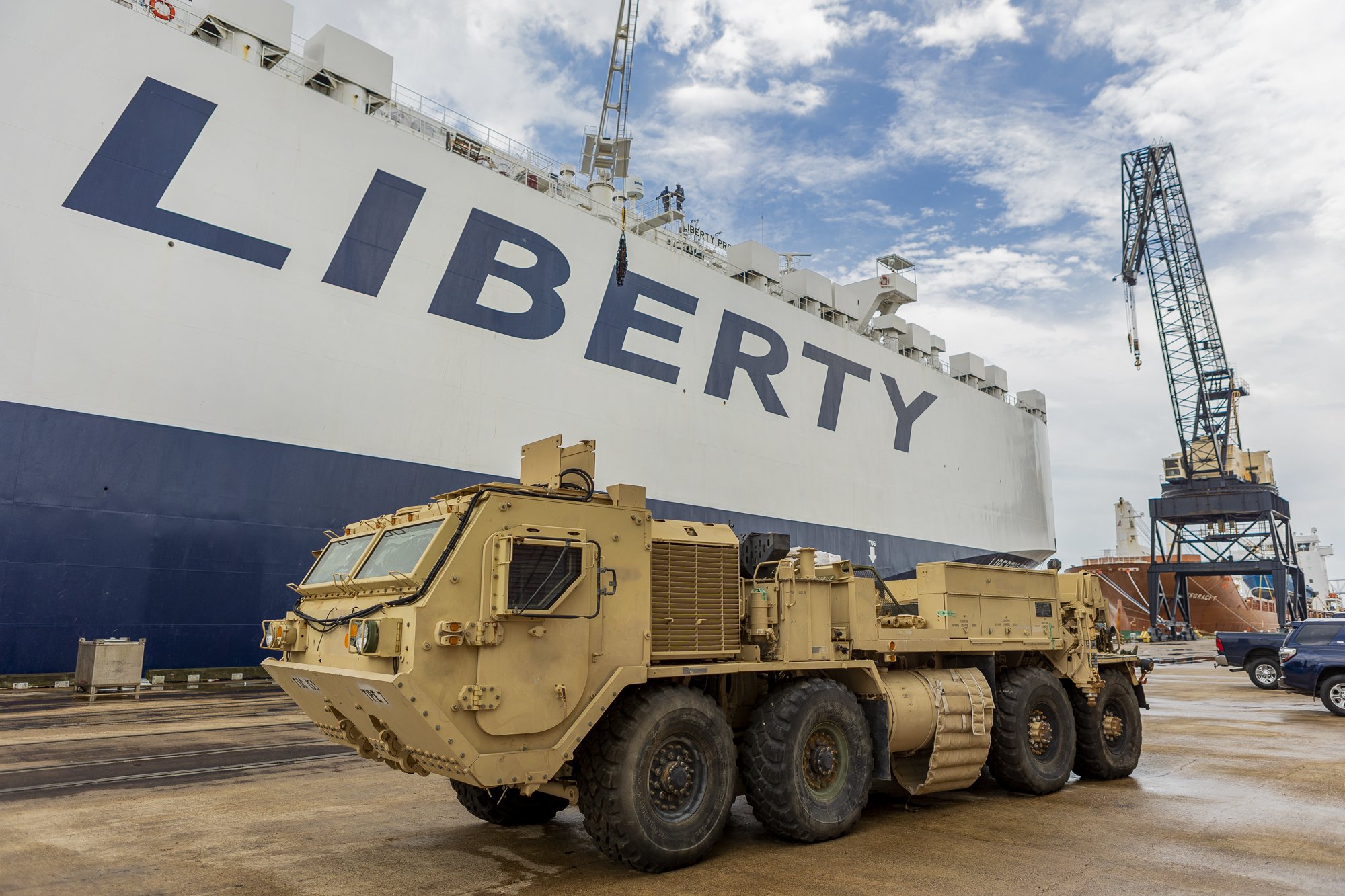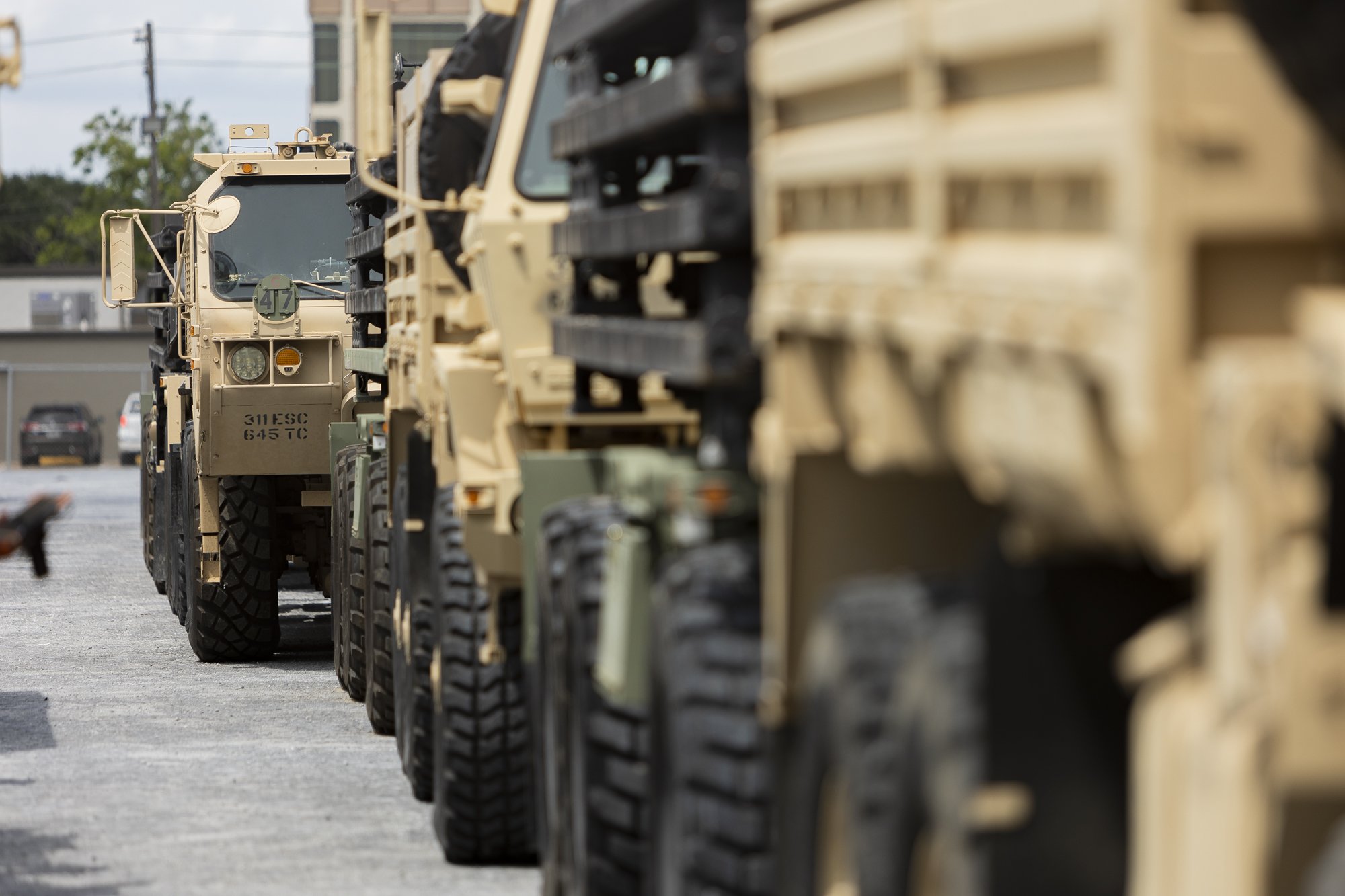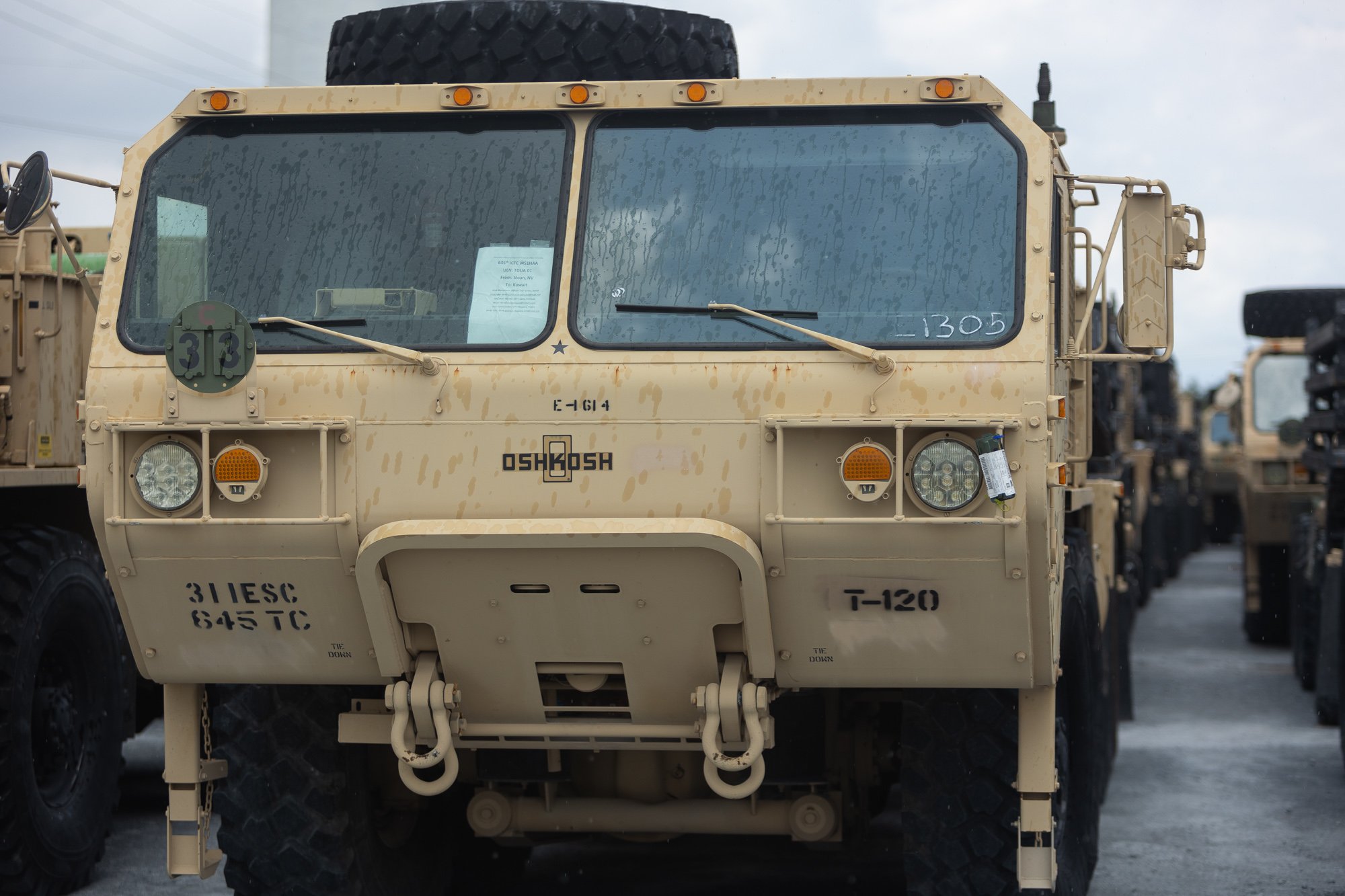
Maritime Security Program
The Maritime Security Program (MSP) is a major component in our military sealift policy. In time of war or national emergency, the fleet provides the necessary sealift to support our nation’s warfighters across the globe. Keeping these vessels in the U.S.-flag fleet sailing internationally during peacetime helps to ensure the job base of the merchant marine.
“It is our U.S.-flagged merchant fleet and our mariners that ensure that our Soldiers, Sailors, Airmen, and Marines are supplied. From Inchon to Iraq, our mariners and our maritime industry delivered... Let us not, as a nation, sign away our remaining sealift capacity to non-U.S.-flagged fleets sailed by non-U.S. mariners.”
The MSP is a unique government/private industry partnership that gives the Department of Defense (DOD) the commercial sealift capability it needs while saving the American taxpayer the billions of dollars it would take for DOD to develop and maintain this capability itself. Conceptualized under President George H.W. Bush, and first implemented under President Bill Clinton, full funding for MSP has been supported by each President and Congress since 1996.
Since 2009, privately-owned U.S.-flag commercial vessels and their civilian U.S. citizen crews have transported more than 90 percent of the sustainment cargo required to support U.S. military operations and rebuilding programs in Iraq and Afghanistan. Significantly, MSP-enrolled vessels carried 99 percent of these cargoes. Without the assured U.S.-flag commercial sealift capability provided by MSP, U.S. troops deployed overseas could find themselves dependent on foreign vessels and foreign crews to deliver the U.S. government’s supplies and equipment they need to do their job on our behalf.
Origin of MSP. President Clinton signed into law the Maritime Security Act (P.L. 104-239) on October 8, 1996, after the legislation was overwhelmingly passed by the U.S. House of Representatives and Senate. This measure established the Maritime Security Program (MSP) for ten years to support the commercial operation of 47 militarily useful U.S.-flag vessels crewed by American citizens and engaged in international trade for the United States. The program provided each MSP-enrolled vessel with an annual stipend and required that enrolled vessel operators make their ships and their global commercial transportation resources available to the Department of Defense whenever or wherever needed during times of war or national emergency.
Effective FY 2021, the MSP Program was reauthorized by Congress through FY 2035. Despite the existence of long-term funding authorizations from Congress, the program also depends upon the annual congressional appropriations process to ensure approved funding levels are provided to maintain operational capability.
Unlike past governmental support programs, such as the now defunct Operating-Differential Subsidy (ODS) program, MSP has few restrictions on vessels operating in the U.S. foreign commerce. Eligible vessels may be built either in the United States or in a foreign country, but the vessels must be crewed by credentialed U.S. citizen mariners. The program, subject to annual appropriations, is administered by the U.S. Department of Transportation Maritime Administration (MARAD) on the basis of renewable one-year contracts with vessel operators, provided that funding is made available by Congress.
“Our Maritime Security Program gives our Nation immediate assured access to not only a global fleet of ships but also extensive logistics networks and capacity in times of national emergency... the Maritime Security Program is a bargain.”
A 2006 report prepared for the National Defense Transportation Association Military Sealift Committee concluded that “the likely cost to the government to replicate just the vessel capacity provided by MSP dry cargo vessels would be $13 billion.” In addition, the United States Transportation Command has estimated that it would cost our Government an additional $52 billion to replicate the global intermodal systems made available to the Department of Defense (DOD) by our U.S.-flag vessel operators.
AMC strongly urges Congress to provide the full funding level authorized each year for MSP during its annual appropriations process. It is important that Congress understand that failure to fully fund MSP in the short term could undermine the sealift capability and reliability causing far more expensive consequences in the future.
The Maritime Security Program is one of the most efficient ways for the U.S. government to ensure our nation has the sealift needed in peacetime and war at cost-effective levels. As many Military Sealift Command (MSC) and MARAD Ready Reserve Force (RRF) ships will be reaching the end of their useful lives, it is important that Congress recognizes that strategic sealift cannot suffer lost capacity and it must ensure that federal investments are provided in a way that represents the best value to the taxpayer.
“As a military professional and senior leader, I think about and plan for what the future may hold, and I would tell you we must prepare for the real possibility we will not enjoy the uncontested seas and broad international support experienced in 1991. If either of those possibilities becomes reality, and if we remain committed to responding to security incidents around the globe, the only way of guaranteeing we decisively meet our national objectives is with U.S. ships operated by U.S. mariners.”
Supporting more ships under the U.S.-Flag supports the ships operators, vessels, and most importantly seafarers with stable employment base, ensuring our nation’s defense efforts have access to highly qualified certified U.S. merchant mariners.
Maritime Administration (MARAD) Funding. The Maritime Administration (MARAD) is the primary governmental advocacy body for the U.S. maritime industry within the Executive Branch of the U.S. government. It is critical that MARAD has the funding it needs to support its many programs, including the Maritime Security Program, as well as for the operation and maintenance of the Ready Reserve Force and National Defense Reserve Fleet. Furthermore, MARAD has responsibility to ensure a consistent supply of capable and well trained merchant mariners. MARAD has oversight and support responsibilities for the U.S. Merchant Marine Academy at Kings Point, New York, and also provides limited funding to the six State Maritime Academies (SMA’s): California Maritime Academy, Maine Maritime Academy, Massachusetts Maritime Academy, Great Lakes Maritime Academy, Texas A&M Maritime Academy, and the State University of New York Maritime Academy. MARAD also provides training vessels to all six State Maritime Academies for use in at-sea training and as shore-side laboratories. These vessels are part of the Maritime Administration’s assistance to the academies to train highly qualified licensed.












